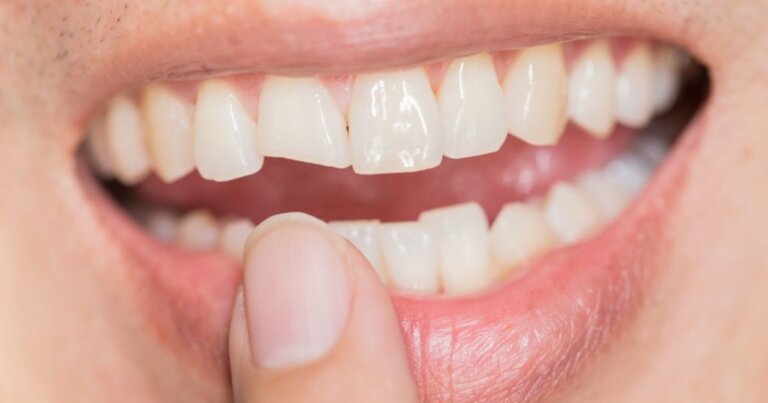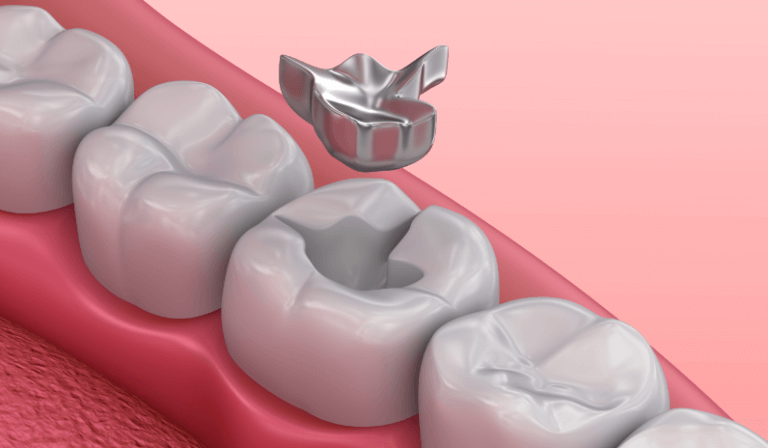Missing Tooth Filling

What Is A Missing Tooth Filling?
A Missing Tooth Filling occurs when a dental filling designed to restore a tooth falls out or becomes dislodged. Dental fillings, made from materials like amalgam, composite resin, or glass ionomer, are essential for repairing teeth damaged by decay or trauma. Losing a filling, however, can lead to pain, sensitivity, and the risk of further tooth decay or infection.
Before you contact a Toronto dentist to examine a Missing Tooth Filling, there are some things you should know as a patient:
- Why Do Fillings Become Missing?
- Signs And Symptoms Of A Missing Tooth Filling
- Treatment Options For A Missing Tooth Filling
- Managing A Missing Tooth Filling Until You Can See The Dentist
- Frequently Asked Questions About Missing Tooth Fillings
If you have questions about a Missing Tooth Filling or other dental problems, please contact us for more information.
Why Do Fillings Become Missing?
Several factors can contribute to the loss of a dental filling:
- Tooth Decay: If decay progresses beneath the filling, it weakens the bond, causing the filling to loosen.
- Wear and Tear: Chewing, grinding, or clenching your teeth over time can degrade fillings.
- Cracked Tooth: A fracture in the tooth surrounding the filling can dislodge it.
- Dental Trauma: Accidents or injuries can displace fillings.
- Aging Fillings: Over time, fillings naturally degrade, increasing the likelihood of falling out.
- Poor Oral Hygiene: Neglecting dental care allows decay to weaken fillings.
- Improper Placement: Fillings that weren’t properly bonded may fail prematurely.
A dentist can assess the underlying cause and recommend the best solution to restore your tooth. If you have further questions about a Missing Tooth Filling, please contact us.

Signs And Symptoms Of A Missing Tooth Filling
Recognizing the symptoms of a missing filling ensures prompt action:
- Tooth Sensitivity: Pain when eating or drinking hot, cold, or sweet foods.
- Visible Hole: A gap or cavity where the filling once was.
- Pain or Discomfort: Especially when biting or chewing.
- Rough Edges: A sharp or uneven surface can irritate your tongue or cheek.
- Discoloration: A cavity exposed to food and bacteria may darken.
- Infection: Swelling, abscesses, or fever may indicate bacterial infiltration.
If you notice these symptoms, contact your dentist immediately to avoid further complications. If you have further questions about signs and symptoms of a Missing Tooth Filling, please contact us.
Treatment Options For A Missing Tooth Filling
Your dentist will determine the best solution based on the extent of the damage:
- Replace the Filling: For small cavities, the dentist can clean the area and insert a new filling.
- Dental Crown: For weakened or severely damaged teeth, a crown may be placed to protect and restore the tooth.
- Root Canal Treatment: If decay reaches the tooth’s pulp, a root canal followed by a filling or crown may be necessary.
- Tooth Extraction: In severe cases where the tooth cannot be saved, extraction may be required. Options like dental implants or bridges can replace the missing tooth.
Consult your dentist to choose the best course of action based on your specific needs. If you have further questions about how to treat a Missing Tooth Filling, please contact us.
Managing A Missing Tooth Filling Until You Can See The Dentist
If you experience a missing tooth filling, it is important to seek dental attention as soon as possible. However, if you cannot see a dentist immediately, here are some tips to manage the missing filling:
- Use Over-the-Counter Pain Medication: Over-the-counter pain medication, such as Advil (ibuprofen) or Tylenol (acetaminophen), can help relieve tooth pain or sensitivity from a missing dental filling. Follow the instructions on the label and do not exceed the recommended dose. Unless you have a health condition that prevents you from taking either ibuprofen or acetaminophen, the absolute maximum dose that I recommend patients take for the worst dental pain is 600 mg ibuprofen combined with 1000 mg acetaminophen every 4 to 6 hours.
- Practice good oral hygiene: Keeping the area around the missing filling as clean as possible can help prevent further decay and alleviate some of the pain or sensitivity. Brush and floss gently around the tooth. Rinsing your mouth with warm salt water or mouthwash can help reduce infection, inflammation and alleviate toothache pain. You can buy any mouthwash available at your pharmacy or health foods store. Alternatively, you can mix a teaspoon of salt in a cup of warm water and swish the solution around your mouth for about 30 seconds before spitting it out.
- Avoid Hot And Cold Foods: Foods that are too hot or too cold can cause tooth sensitivity and pain. Choose room temperature foods so as not to irritate the sensitive tooth.
- Avoid Hard And Sticky Foods: Teeth with missing fillings are vulnerable to more damage, so it is prudent to avoid hard and sticky foods that can weaken the tooth’s structure.
- Avoid Chewing On The Damaged Tooth: Favor using the other side of your mouth as not to further damage the tooth with the missing filling.
- Use Temporary Filling Material: Temporary dental filling material can be purchased at most drugstores and can be used to cover the cavity until you can see your dentist. Alternatively, you can use orthodontic wax to temporarily plug up the hole.
It is important to remember that these tips are temporary measures and should not replace a visit to the dentist. Seeking prompt dental attention is crucial to prevent further damage or infection. If you have further questions about how to manage a Missing Tooth Filling, please contact us.
Frequently Asked Questions About Missing Tooth Fillings
- Is it an emergency if my filling falls out?
A missing filling isn’t always an immediate emergency, but it’s crucial to address it promptly to prevent further decay or infection.
- How long can I wait before replacing a missing filling?
Ideally, visit your dentist within a few days. Waiting longer increases the risk of complications like infections or structural damage.
- Can I eat normally after losing a filling?
Avoid hard, sticky, or extremely hot or cold foods. Opt for soft, room-temperature foods until the filling is replaced.
- What materials are best for replacing a missing filling?
Materials like composite resin, amalgam, or ceramic are commonly used. Your dentist will recommend the best option based on durability and aesthetics.
A missing filling may seem minor, but ignoring it can lead to significant dental issues. If you need help with a missing tooth filling, contact us today to schedule an appointment. Your oral health is our priority!

